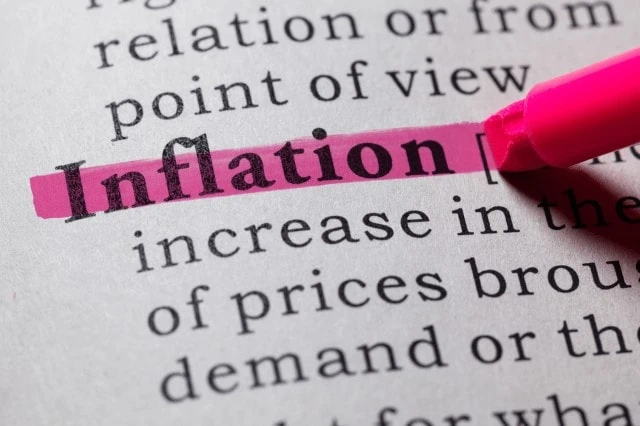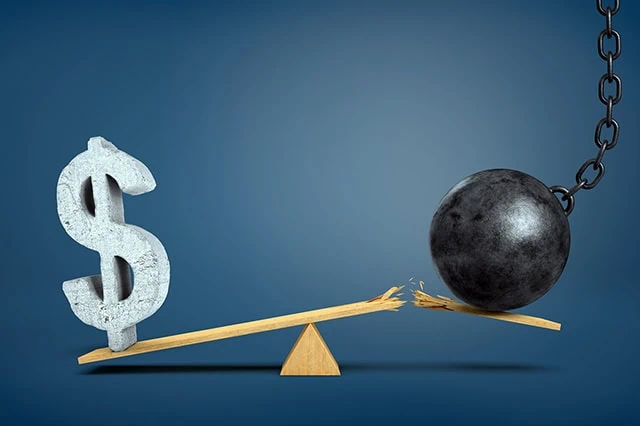You worked hard for decades to build up your nest egg. And now, it’s finally time to let yourself use some of it … but while you want to crack into your retirement savings, you don’t want to crack them wide open, either.
If you’ve saved enough money for retirement, congratulations—it’s a less common success than you might realize. Fidelity’s 2023 Retirement Savings Assessment found that a little more than half of working American households are unlikely to be able to cover their essential costs during retirement.
However, “saving enough” based on educated projections isn’t necessarily enough. You have to spend smartly and stick to your plan—because a few wrong choices might mean that your retirement won’t be covered after all. Indeed, there’s a variety of common mistakes that cause people to fly through their savings faster than expected.
Half the battle is knowing where these financial landmines sit. So, let’s go over some of the sneaky ways a person might accidentally flush away too much of their retirement savings. Being aware of these common mistakes can help you avoid them.
Table of Contents
Avoid These Money Mistakes to Preserve Your Retirement Savings

Once you reach retirement, your money management strategy will necessarily be much different than during your working years.
Failing to make the right adjustments is where most people go awry. Sometimes retirement savings disappear because of lifestyle choices, though other times they disappear because of financial decisions that seem sound but aren’t necessarily in your best interest.
Fortunately, even if you’ve already been making some of these mistakes, you should be able to remedy them. Check out the following errors some people make in retirement to learn what adjustments you might need to make—or just reassure yourself that you’re on the right path.
1. Relying Too Heavily on Annuities

An annuity is a financial product that provides a regular stream of income over a set period of time, whether that’s for a specific number of years or for the rest of an individual’s life.
They’re typically offered by insurance companies, though other financial institutions offer them, too. People often buy annuities on their own, though some employers provide annuities as a workplace benefit.
People often seek annuities for retirement because they’re a guaranteed income source that can be used for essential expenses. With an annuity, you know your income won’t fall to zero.
But some financial experts, such as Roland Prestenback, CFA, CFP®, of Prestenback Wealth, warn against relying on annuities too much. Annuities aren’t always able to keep up with your long-term needs, for one. Also, investing in annuities might mean missing out on assets with more lucrative returns, such as stocks, so it’s important to weigh annuities’ opportunity cost.
2. Expensive Hobbies

Retirees clearly have more time for their hobbies in retirement, but sometimes doing more of what you love can become prohibitively expensive.
For instance, if you love exploring other countries … well, travel isn’t cheap. So if your goal is to expand from an annual European vacation during your working years to an international holiday every two months, you could rapidly drain your retirement savings if your plan didn’t account for escalated hobby-cost increases.
If you realize your chosen hobby or hobbies are cutting too deeply into your budget, you might either need to cut down on the number of hobbies you have, or how often you participate in them. Alternatively, you might reconfigure your budget so you have more to spend recreationally. Keeping with the travel example, retirees with wanderlust might downsize their home—that’s less money toward a mortgage, insurance, lawn care, and other associated costs, and more money toward flights, hotels, and attractions. And other people might choose to work a part-time job to fund expensive retirement hobbies.
Whatever you like to do, always check to see whether you can take advantage of any senior discounts. You might be able to save more money than you realize.
Related: 13 Dividend Kings for Royally Resilient Income
3. Giving Away Too Much Money

People calculate their estimated expenses when building a retirement plan, but they often don’t account for other people’s expenses.
Some retirees want to spoil their grandchildren. Some retirees feel pressured into supporting their adult children. This age group also receives a lot of donation requests from charities, which can be difficult to turn down.
But giving away too much money to others is an easy way to drain your retirement savings much faster than planned. There’s nothing wrong with a bit of gifting, but retirees need to avoid being too generous at the cost of blowing through their budget.
In retirement, you need to come first and foremost—and that sometimes means making hard choices about when to give, and how much.
Related: Best Schwab Retirement Funds for an IRA
4. Paying Too Much in Whole Life Insurance Premiums

Whole life insurance differs from term life insurance in that it can be used as an investment. When you pay for whole life insurance, the policy’s cash value grows over time, both through making ongoing premium payments and accumulating interest on the underlying cash value.
Aside from the guaranteed death benefit of the policy, whole life insurance offers other perks. For one, whole life policies generally pay dividends (which are separate and apart from the earnings on your cash value). Also, you’ll eventually be able to withdraw money from the cash value you’ve accrued to finance whatever expenses you have later in life. You can eventually withdraw or borrow money from your policy to cover large purchases, sure, but those funds can also be used to simply supplement your income.
Related: 7 Best Wealth + Net Worth Tracker Apps [View All Your Assets]
However, as you age, you should re-evaluate your insurance needs; you might be overpaying for the protection offered by these policies.
People tend to buy life insurance of any flavor as a way to provide financial peace of mind in the event that they die prematurely while their family is still relying on them for financial support. But over time, the overall assets your family could rely on in the event of your death should increase, while your family’s need for your financial support should diminish (as your kids also age and their earnings grow).
Given this natural dynamic, if you continue paying for whole life insurance premiums, you might be over-hedging the risk of a premature death when your bigger risk is longevity—namely, outliving your savings. Said differently, some people might still be paying into a whole life insurance policy in retirement when they should instead be receiving income from the policy.
Related: Best Vanguard Retirement Funds for a 401(k) Plan
5. Paying High Fees on Your Investments

You’re not the only person who benefits from many of your investments. For instance, if you hold an index fund, you’re regularly paying a little off the top to the provider. If you hold an actively managed fund, you’re regularly paying a little bit more off the top to both the provider and the people managing the fund. And if you have an advisor selecting mutual funds (and other investments) for you, you’re also regularly paying that advisor for their service.
The point? Fees add up.
Here’s an example. You invest $10,000 into Mutual Fund A, and $10,000 into Mutual Fund B. You hold both funds for 30 years, and both funds return 7% annually on average. Mutual Fund A has a 0.5% expense ratio; by the end of those 30 years, your investment will be worth $65,495. Mutual Fund B has a 1.0% expense ratio; by the end of those 30 years, your investment will only be worth $56,308. That’s a $9,187 difference! Not only did you pay $3,764 more in expenses over those 30 years compared to Mutual Fund A—you also lost out on an additional $5,423 in opportunity cost (what the extra money that went toward fees would have earned).
That’s not to say you should avoid any form of active, human financial management—quite the contrary, most of the best mutual funds to buy are actively managed, not index, and human advisors can help you produce superior results to DIYing your portfolio.
But many of those best mutual funds also have relatively low fees compared to their peers; indeed, low costs help contribute to their strong performance. So you can do well for yourself by keeping an eye on costs while still striving for excellent returns.
Related: 7 High-Quality, High-Yield Dividend Stocks
6. Not Having Inflation In Mind

Everyone needs a financial plan where their investments match their needs—but those needs aren’t fixed. As Prestenback explains, your needs will be “continuous, ongoing, and increasing.”
For instance, you’ll always need to spend money. But because of inflation, the actual dollar amount you’ll spend each year will likely increase. So effectively, when calculating your withdrawal rate, you’ll want to account for inflation so your portfolio doesn’t wither more quickly than you planned.
Related: The 10 Best Fidelity Funds You Can Own
7. Not Having Longevity in Mind

People are living much longer than they once did. Fifty years ago, Americans’ life expectancy was about 71 years; today, it’s nearly 79. So while the conventional wisdom that your portfolio should become more conservative as you age still holds true, important details—such as how conservatively you should invest as you near retirement, and when in the investment lifecycle you should start hunkering down—have shifted.
For instance, once upon a time, the idea was that you should have the same percentage of bonds as your age. If you were 65, then, you’d have 65% in bonds, and just 35% in stocks.
Today, that guidance is out of date. Nowadays, many people need to plan to live into their 80s and even their 90s, so financial planners say you might want as much as 70% of your portfolio in stocks even well after you’ve hit normal retirement age so you don’t outlive your savings.
Related: 5 Best Fidelity Retirement Funds [Low-Cost + Long-Term]
8. Having Instruments Incorrectly Matched to Liabilities

Asset-liability matching (ALM) is when you use assets to pay for future liabilities across time. It’s a method that has been long employed by institutional investors with both short- and long-term portfolio needs, but regular mom ‘n’ pop retirees can use it too.
Think you’ll need a $50,000 lump sum in two years without liquidating your portfolio? Matching this expected need with assets that can finance that expense is the core of ALM. If you do it correctly, you’ll minimize the risk of not having enough money to meet your expenses while still growing your portfolio over the long-term to finance other needs.
Let’s think about a retiree’s needs. Most retirees aren’t going to make a lot of big, splashy purchases in retirement. In our example, let’s assume you’ll already have your home paid off in retirement but you’ll still need to cover bills including home insurance, utilities, cable, a cellular plan, and groceries, among other things. That means you’ll need cash in your account every month to pay those bills—but you’ll also want your portfolio to appreciate faster than inflation, and you’ll want your portfolio’s income generation capabilities to rise faster than inflation.
Thus, many seniors rely on things like dividend calendars (which ensure your dividend stocks collectively pay a similar amount each month) and bond funds, which typically pay income every month. You can also invest in monthly dividend stocks, which pay dividends at the frequency you need while also offering upside potential. This is one way retirees can use ALM to match their assets with their liabilities.
For ALM to work correctly, your assets should be able to generate income (e.g., dividends and bond interest) and be easily converted to cash when necessary. For instance, if your retirement savings are largely invested in physical real estate, it could be extremely difficult to liquidate those holdings in a timely manner if you need an influx of money. But assets like stocks and bonds are relatively easy to sell for cash.
ALM can reduce investment and liquidity risk, among other benefits, but it requires careful planning. Thus, you should consider working with a financial advisor or planner to get a proper ALM plan in place.
Related: 10 Best Vanguard Funds for the Everyday Investor
9. Getting Into Credit Card Debt

While credit card debt is stereotyped as a youthful mistake, it affects all age groups. According to the 2023 AARP Debt Survey, almost 75% of Americans age 50 and older carry some form of debt. Of those that carry debt, nearly 60% carry credit card balances over each month, and a little under half owe at least $10,000 or more in credit card debt.
Survey respondents listed a number of reasons for that debt, though housing costs were the most cited.
Paying a high rate of interest on debt is a quick way to eat into your retirement savings much more quickly than you planned.
It’s possible you might want to take a larger sum out of your retirement savings now to pay off the debt so you at least minimize the long-term hit from interest. But this isn’t a sustainable model. If you find yourself starting to rely on credit cards just to make your finances work, you might need to review and readjust your budget.
Related: 10 Best Dividend Stocks to Buy [Steady Eddies]
Related: 6 Best Stock Recommendation Services [Stock Picking + Tips]

Stock recommendation services are popular shortcuts that help millions of investors make educated decisions without having to spend hours of time doing research. But just like, say, a driving shortcut, the quality of stock recommendations can vary widely—and who you’re willing to listen to largely boils down to track record and trust.
The natural question, then, is “Which services are worth a shot?” We explore some of the best (and best-known) stock recommendation services.
Related: 12 Best Long-Term Stocks to Buy and Hold Forever
As even novice investors probably know, funds—whether they’re mutual funds or exchange-traded funds (ETFs)—are the simplest and easiest ways to invest in the stock market. But the best long-term stocks also offer many investors a way to stay “invested” intellectually—by following companies they believe in. They also provide investors with the potential for outperformance.
So if your’e looking for a starting point for your own portfolio, look no further. Check out our list of the best long-term stocks for buy-and-hold investors.
Related: Best Target-Date Funds: Vanguard vs. Schwab vs. Fidelity

Looking to simplify your retirement investing? Target-date funds are a great way to pick one fund that aligns with when you plan to retire and then contribute to it for life. These are some of the best funds to own for retirement if you don’t want to make any investment decisions on a regular basis.
We provide an overview of how these funds work, who they’re best for, and then compare the offerings of three leading fund providers: Vanguard, Schwab, and Fidelity.
Please Don’t Forget to Like, Follow and Comment

Did you find this article helpful? We’d love to hear your thoughts! Leave a comment with the box on the left-hand side of the screen and share your thoughts.
Also, do you want to stay up-to-date on our latest content?
1. Follow us by clicking the [+ Follow] button above,
2. Subscribe to The Weekend Tea, our weekly newsletter to read more about investing, spending, taxes, and more, and
3. Give the article a Thumbs Up on the top-left side of the screen.
4. And lastly, if you think this information would benefit your friends and family, don’t hesitate to share it with them!






